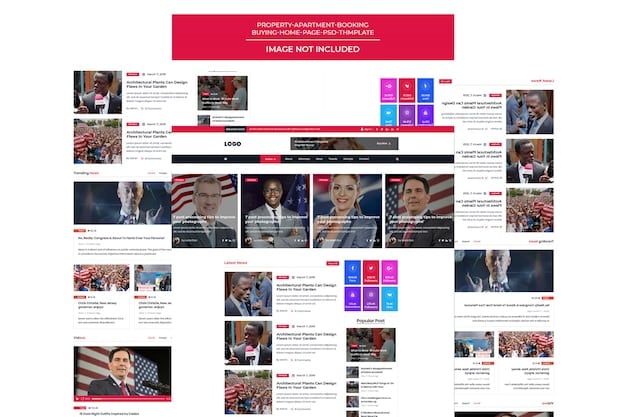Monetizing Online Journalism in 2025: Subscription & Revenue Strategies

Anúncios
Monetizing online journalism in 2025 requires US news outlets to explore diversified strategies, including innovative subscription models, memberships, events, and leveraging data analytics to enhance reader engagement and build sustainable revenue streams in a rapidly evolving digital landscape.
Anúncios
The landscape of online journalism is constantly evolving, and as we approach 2025, US news outlets face the critical challenge of securing sustainable revenue streams. Exploring innovative strategies for monetizing online journalism in 2025, including subscription models and revenue diversification strategies, is pivotal for their survival and continued provision of quality news.
The Evolving Landscape of Online Journalism
Online journalism has undergone a radical transformation over the past two decades, moving from a nascent digital frontier to a mature, multifaceted ecosystem. This evolution has been marked by the rise of social media, the proliferation of mobile devices, and, most importantly, a fundamental shift in how audiences consume news.
Anúncios
However, the digital transition has presented formidable challenges for traditional news outlets, particularly regarding monetization. The traditional advertising-based model, which historically fueled news production, has been disrupted by the dominance of tech giants like Google and Facebook, which capture a large share of digital ad revenue.
The Decline of Traditional Advertising Revenue
The shift of advertising dollars to digital platforms has dramatically impacted the financial stability of news organizations. Print advertising, a long-standing revenue pillar, has experienced a steep decline, and while digital advertising has grown, it has not fully compensated for the losses in print.
- Reduced Profit Margins: Digital ad rates are often lower than those of print, requiring a greater volume of traffic to generate comparable revenue.
- Ad Blocker Usage: The increasing use of ad blockers further reduces the potential revenue from digital advertising.
- Competition from Tech Giants: Major platforms like Google and Facebook control a significant portion of digital ad revenue, leaving less for publishers.

To sustain quality journalism in this evolving environment, news organizations have been forced to explore alternative revenue models. Among these, subscription models have emerged as a promising approach.
Subscription Models: A Path to Sustainability
Subscription models represent a fundamental shift in the way news organizations generate revenue, moving from reliance on advertising to direct support from readers. This approach recognizes that quality journalism has value and that audiences are willing to pay for reliable, in-depth reporting.
Several types of subscription models have emerged in recent years, each designed to cater to different audience needs and preferences. These models range from straightforward paywalls to more nuanced approaches that offer varying levels of access and benefits.
Hard Paywalls vs. Soft Paywalls
Paywalls are a common strategy, but their implementation can vary significantly. A hard paywall restricts access to all or most content, requiring users to subscribe to view any articles. In contrast, a soft paywall allows users to access a limited number of articles for free before requiring a subscription.
- Hard Paywalls: Suitable for publications with highly specialized or exclusive content, but may deter casual readers.
- Soft Paywalls: Offer a balance between accessibility and revenue generation, allowing publications to build a relationship with readers before asking for payment.
- Metered Paywalls: Allow a set number of free articles per month, which can be effective for driving subscriptions without alienating potential readers.
The choice between a hard and soft paywall depends on the publication’s brand, audience, and content strategy. Many news organizations are experimenting with hybrid approaches to optimize their subscription revenue.

Diversifying Revenue Streams Beyond Subscriptions
While subscription models have shown promise, relying solely on them may not be sufficient for long-term sustainability. Diversifying revenue streams is crucial for mitigating risk and capitalizing on new opportunities in the digital landscape. This involves exploring multiple avenues for monetization, including memberships, events, and data analytics.
News organizations are increasingly recognizing the importance of diversifying their revenue base to reduce their dependence on any single source. This can involve a range of strategies, from offering premium content and services to expanding into new areas such as e-commerce and events.
Memberships and Community Engagement
Memberships offer a way to engage directly with the audience while generating revenue. Unlike subscriptions, memberships often emphasize community building and providing exclusive benefits to members.
Building a strong sense of community around a news organization can foster loyalty and generate additional revenue streams. Memberships can include access to exclusive content, events, and other perks.
- Exclusive Content: Provide members with access to in-depth analysis, behind-the-scenes reporting, and other content not available to non-members.
- Events and Workshops: Host exclusive events and workshops for members, creating opportunities for networking and learning.
- Community Forums: Create online forums where members can interact with journalists and other members, fostering a sense of community.
Leveraging Data Analytics for Enhanced Revenue
Data analytics has emerged as a powerful tool for news organizations to improve their revenue strategies. By analyzing reader behavior and preferences, publishers can optimize their content, personalize their offerings, and target their marketing efforts more effectively.
Understanding audience behavior is crucial for tailoring content and creating revenue opportunities. Data analytics can provide insights into what content is most popular, how readers are engaging with it, and what types of readers are most likely to subscribe.
Personalization and Targeted Marketing
Personalization involves tailoring content and advertising to individual readers based on their interests and preferences. Targeted marketing uses data analytics to identify potential subscribers and deliver personalized offers.
By leveraging data analytics, news organizations can create a more engaging and personalized experience for their readers, increasing the likelihood of subscriptions and repeat visits.
- Content Recommendations: Recommend articles and other content based on readers’ past behavior.
- Personalized Newsletters: Send newsletters with content tailored to individual readers’ interests.
- Targeted Advertising: Deliver ads that are relevant to readers’ interests and demographics.
The Role of Technology in Monetization
Technology plays a critical role in enabling and enhancing monetization strategies for online journalism. From payment platforms to content management systems, technology provides the infrastructure for delivering content, processing payments, and analyzing data.
Advancements in technology are creating new opportunities for news organizations to monetize their content and engage with their audiences. This includes leveraging artificial intelligence, blockchain, and other emerging technologies.
AI-Powered Content Creation and Distribution
Artificial intelligence (AI) can be used to automate content creation, personalize user experiences, and optimize advertising campaigns. AI-powered tools can also help news organizations identify trends and insights from large datasets.
AI has the potential to transform many aspects of online journalism, from content creation to audience engagement. News organizations can use AI to generate personalized news feeds, create automated summaries of articles, and even write basic news stories.
The Future of Monetizing Online Journalism
Looking ahead to 2025 and beyond, the challenge of monetizing online journalism in 2025 will continue to evolve. News organizations will need to adapt to changing audience behaviors, emerging technologies, and new economic realities to remain sustainable. Focusing on innovative subscription models and revenue diversification strategies provides a path forward.
The future of online journalism will likely be characterized by a greater emphasis on direct reader support, diversified revenue streams, and the strategic use of technology. Those news organizations that embrace these trends will be best positioned to thrive in the years to come.
- Niche Content: Developing specialized content to appeal to specific audiences, who may be more willing to pay for in-depth coverage.
- Community Focus: Building strong relationships with readers through memberships and other engagement initiatives.
- Technological Innovation: Leveraging new technologies to create new revenue opportunities and improve the user experience.
| Key Point | Brief Description |
|---|---|
| 🔑 Subscription Models | Offering tiered access for exclusive content. |
| 🤝 Community Memberships | Building loyalty through exclusive perks and engagement. |
| 📊 Data Analytics | Leveraging audience insights to tailor content & marketing. |
| 🤖 AI Integration | Automating content & personalizing user experiences. |
Frequently Asked Questions
▼
The primary challenges include declining advertising revenue, competition from tech giants, changing audience behaviors, and the need to adapt to emerging technologies to remain sustainable in a rapidly evolving digital landscape.
▼
Subscription models allow news outlets to generate revenue directly from readers, acknowledging the value of quality journalism. This approach provides a sustainable funding source less reliant on unpredictable advertising revenue streams.
▼
Data analytics allows news organizations to understand reader behavior, personalize content, and target marketing efforts more effectively. This leads to increased engagement, higher subscription rates, and better revenue generation overall.
▼
Community memberships foster loyalty and provide additional revenue streams through exclusive content, events, and online forums. They create a sense of belonging, which increases engagement and long-term support from readers.
▼
AI can automate content creation, personalize user experiences, optimize advertising campaigns, and identify trends from large datasets. This enhances efficiency, improves reader engagement, and helps maximize revenue opportunities.
Conclusion
In conclusion, monetizing online journalism in 2025 requires a multifaceted approach that combines innovative subscription models, diversified revenue streams, strategic use of data analytics, and technological advancements. By embracing these strategies, US news outlets can adapt to the evolving digital landscape and secure their future, continuing to provide quality news for the public.





